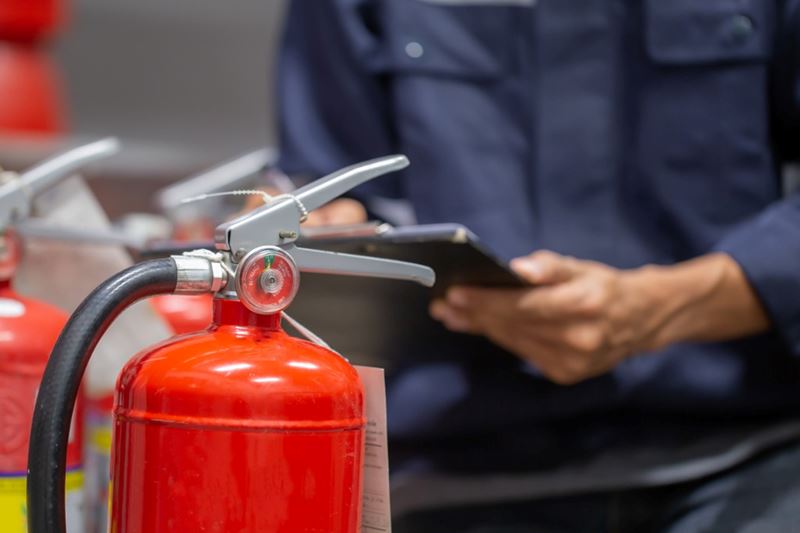4 insurance coverages every manufacturer should consider
4 insurance coverages every manufacturer should consider
The demands on today’s manufacturer are significant: innovations are challenging conventional methods of doing business; worldwide supply chains are becoming ever more complicated; and the competition from foreign manufacturers grows stronger every year.
In this ever-evolving industry, insurance coverages must become more sophisticated and adapted to the specific needs of the client.
Historically, a manufacturer could rely on the standard insurance coverages like liability, property and equipment breakdown for protection. But times have changed. In today’s market, these coverages are just the beginning – there are even more common insurance risks manufacturers need to mitigate.
Here are four key coverages that every manufacturer should consider:
1. Errors and Omissions (E&O) coverage
Errors and Omissions (E&O) protection isn’t just for professional services. Manufacturers face significant errors and omissions risks with every product, project or part they create. In fact, courts are now offering more recourse for faulty product designs, which means that a product manufacturing mistake that causes downtime for your customer could result in a lawsuit against you for the financial loss your customers face.
There are three key reasons manufacturers should carry E&O insurance:
- Protect yourself against costly disputes arising from an accusation that you failed to deliver on designed product specifications
- Protect yourself against a client’s alleged financial loss due to the failure of a products intended design
- Show customers that you stand behind your product and will protect their interests in the event of a design flaw
In order to help mitigate an Error & Omissions claim, manufacturers should begin by creating a quality control plan that is reviewed and updated periodically along with the written records on design process and standards.
2. Supply Chain coverage
The North American manufacturing space has changed drastically in the last 50 years with the increased dependency on foreign products and outsourcing of work. In today’s global economy, handing responsibility for your product over to another company is a big decision, but likely one every manufacturer will face.
While outsourcing can be a great way to cut costs, it can also bring new challenges like: limited control over the manufacturing process, complicated inventory management, greater quality control requirements, complex delivery timelines and new security and cyber risks. Experiencing any one of these issues within your supply chain can lead to significant and sometimes unexpected costs.
The ideal Supply Chain protection includes three key coverages:
- Contingent Business Interruption – lost profits and expense coverage for supply chain locations that directly deliver your products, materials or services.
- Unspecified Locations Contents– coverage for your stock and equipment situated at unspecified non-owned locations.
- Worldwide Territory Coverage – protection that reimburses expenses resulting from an interruption of a member of your supply chain at a location outside of North America.
There are many risks to be mindful of, but fortunately, there are steps a manufacturer can take to mitigate supply chain risks, including:
- Prioritize the impact and probability of a disruption in your supply chain
- Research your potential suppliers thoroughly
- Determine your new suppliers’ risks
- Diversify suppliers or use multiple suppliers
- Review all the above periodically
3. Product Recall coverage
A product recall is a daunting scenario for any manufacturing company particularly in a Canadian marketplace where nowadays there are hundreds of recalls both voluntary and federally mandated per year1.
Product recalls can be quite costly. In addition to the time required to identity the problem, fix it, and then replace faulty products, the manufacturer is also often forced to pull staff from their core duties to assist in the recall process. Even the most solid business can be saddled with costs resulting from pre-recall expenses or alleged product tampering, even before they contemplate the costs of the actual product recall.
Unfortunately, not all product recall coverage offerings are built the same. Adequate product recall coverage will look to pick up the costs associated with:
- Product tampering - or even a suspected product tampering that could cause consumers harm
- Pre-recall expenses - like inspection and/or crisis management costs
- Replacement value expenses coverage – to replace the recalled product
In order to mitigate the damage caused by a product recall, manufacturers should create a solid recall plan. Developing strategies and processes, and pre-assigning duties in the event of a recall, could significantly lessen the impact should a product recall ever occur.
4. Worldwide Non-Owned Locations coverage
The globalized nature of today’s world means that a manufacturer has potential customers anywhere in the world. Ignoring these opportunities isn’t an option for manufacturers in a world where online retailers and marketplaces, like Amazon, are redefining retail.
Many standard insurance policies limit insurance coverage to a manufacturer’s non-owned locations within Canada and the United States. At one time this coverage stance was adequate, however, in this expansive global economy, where conducting business in multiple countries is no longer a challenging feat, today’s manufacturer must consider how their stock, and even equipment, can be affected in international non-owned locations.
For example, a Canadian manufacturer may have a custom mould stored at their contracted manufacturer in China. Should a loss occur at the Chinese plant resulting in the destruction of the custom mould, the Canadian manufacturer would be required to replace it to get the manufacturing process back up and running. Having the cost to replace the mould covered would bring about some much-needed peace of mind.
For manufacturers it’s vital that they have at least a basic understanding of their suppliers’ worldwide locations. While they may not have much control over the operations from a risk management perspective, a thorough understanding of the exposures at these worldwide non-owned locations can help alleviate potential product delivery issues and save the manufacturer from costly business interruption expenses.
While these key coverages should be top of mind for manufacturers, every business is unique. That’s why it’s so important to consult with your broker to determine your business protection needs for today and as your business grows and expands.
1 Government of Canada, “Healthy Canadians”, accessed June 25, 2019.



